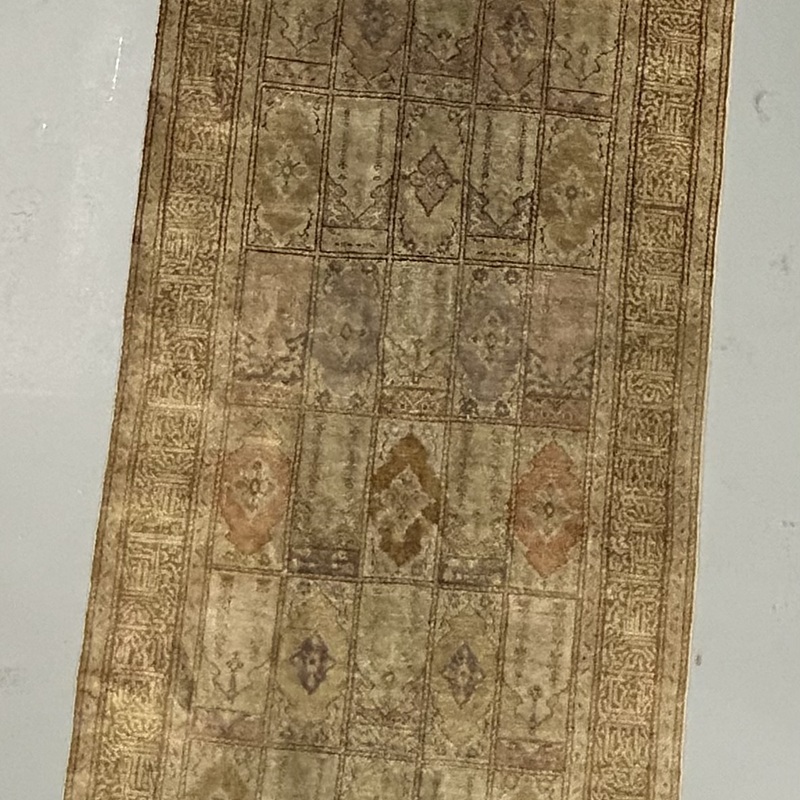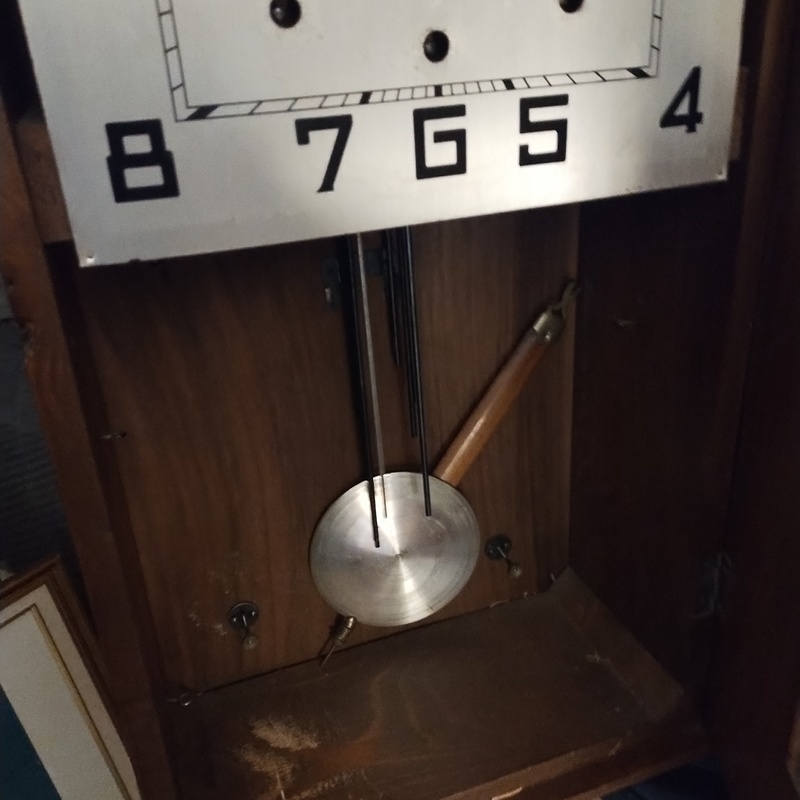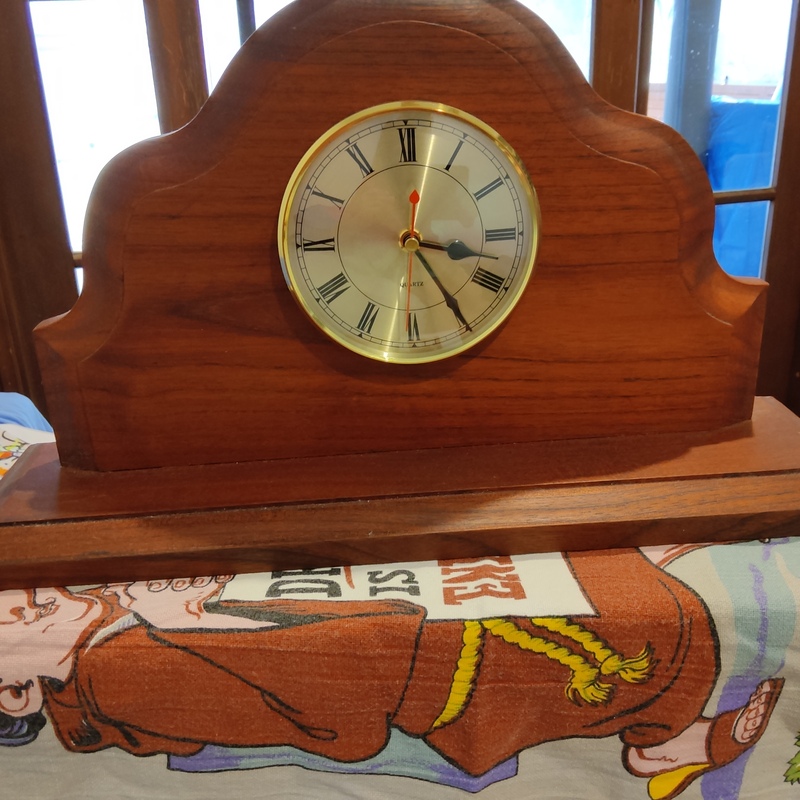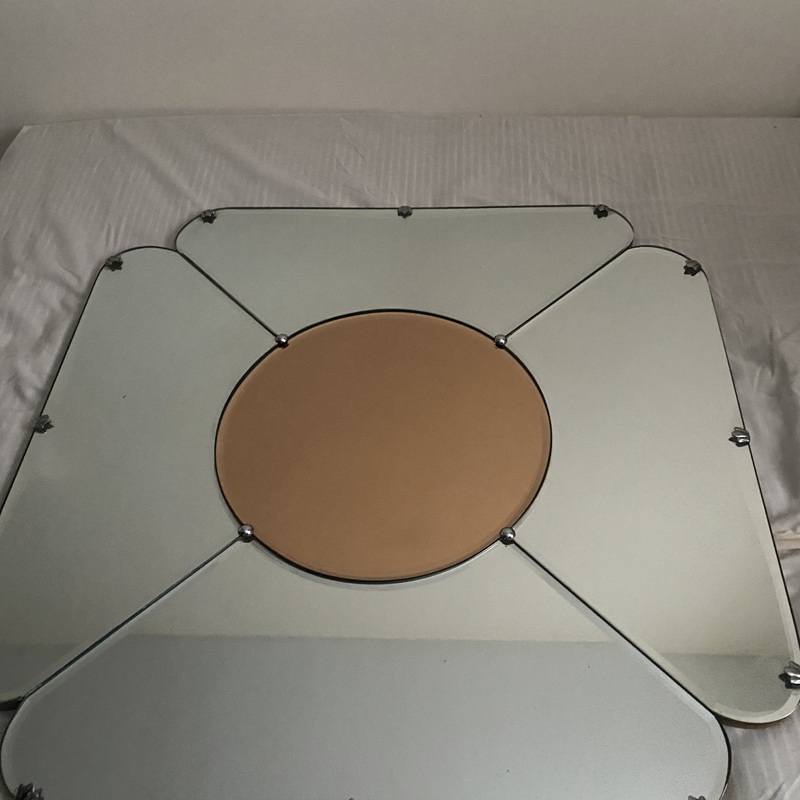










Early 18th Century Tall Case Clock
This is an early 18th century English Tall Case clock, made by William Element of St. Albans. Mr. Element died in 1736, and was listed as a Whitesmith/Blacksmith, and was working from the late 17th century. The clock has a posted movement, with original dial, hand and movement. It displays well-cast Cherubs-holding-Crown spandrels. A replacement bell was put on the side, and that has since been replaced with an appropriate bell put back in its original position on the top. Other than that, the movement is all original, with the exception of a couple of screws. Some original square headed screws remain in place. It has a lead weight, but no way to tell if it is the original one, as well as with the pendulum. The case is tall and narrow. The large fireplace makes it look short in the photo, but it is over 7 feet tall. I believe the pine case is original, but altered several times. The trunk of the case, (back, sides, moldings, front surround and some parts of the base are original. It has a number of early construction features, including the sides of the case going all the way to the floor, with base moldings added on top, as well as old tool marks. The trunk door is a replacement, as are the feet/plinth. The base appears to have been cut down by a few inches. The hood structure is original as well, but with a replaced door, and some other moldings. The well-done Jappaning/laquer work I believe dates from the 20th century, and probably replaced a simpler painted surface. It is at present, a very beautiful clock, although altered. But, nevertheless, is still a rarity for being in its original (now rare) pine case.
I don't have any information.
Gallery/Dealer
No


Hi Clifford, Thank you for sending this item for appraisal.......
Title: Provincial, black and gold lacquered & chinoisserie decorated, single weight driven, 30 hour time and strike, "Cottage" longcase clock with birdcage movement, dial signed "William Element, St. Albans" (Hertfordshire), England made circa 1730...
Case: Approximately 7 feet in height, this is a black and gold lacquered pine (in London the case would be oak, but in the Provinces they were pine and made a bit later than the oak examples) longcase clock of the cottage type, with a stepped caddy top surmounted by three brass ball and spire finials. Below, there is a horizontal frieze above a square glazed dial door within a hood without colonnettes (in many cottage longcase clocks the entire hood usually pulls forward to be removed, i.e. there was often no dial door). A concave molding transitions down to the trunk with its full length rectilinear lacquered door flanked by the decorated sharp corners of the case. There is no transitional molding down to the foreshortened base with broad Chinoisserie molding with straight bracket feet.
Dial: : A square solid brass dial plate with wide Roman hour chapter, Fleur-de-Lys half hour markers tied down to the inner quarter hour chapter ring, Cherubs supporting a crown with Maltese cross, a style made in London circa 1710 but some years later in the countryside. Matte brass dial center with a single steel fenestrated hand and solid stem with bulbous ringed head (style is c. 1725-1730s). (The spandrels and steel hand are created in a retardataire manner and were made later than the origin of the form in London workshops, as one would expect.) The base of the dial carries the engraved signature of "Wm. Element, London".
Movement: A brass plate and post "birdcage" movement with iron elements. The top and bottom plates are fixed at the top plate. There is an anchor escapement and the going train is placed in front of the strike train with the countwheel striking system seen at the back of the movement. The movement is powered by a single iron weight which is wound by pulling the compounded cord up onto the sprocket gearing in the bottom of the movement. Part of the cord should have a lead donut as a counterweight. The twined cord holding the weight is seen properly in place. The movement runs for 30 hours on a single wind, and strikes a large overhead bell hourly. There is a pendulum rod and bob (not shown) swinging from the pendulum suspension at the rear of the movement.
Condition: This reiteration of the heavily restored clock is a great addition to your early room. From these photos it is impossible for me to tell how much of the case is original, but you have told me that "The trunk door is a replacement, as are the feet/plinth. The base appears to have been cut down by a few inches. The hood structure is original, but with a replaced door, and some other moldings. The trunk of the case, (back, sides, moldings, front surround and some parts of the base are original. It has a number of early construction features, including the sides of the case going all the way to the floor, with base moldings added."... The movement bell has been replaced. There is some oxidation of the iron components of the movement. Movement is functional. The Japanned finish is handsome and dates from the 20th century (as most do these days). The major problem in terms of pricing are the multiple case alterations which are major demerits in terms of the antique clock market today. Overall it is however, a good restoration and fits into your home decor perfectly. In England a retailer would charge at least 3000 GBPounds today (~$3800). I have priced it at fair market value, as if sold at auction in the USA in the current market.........................
Best of luck and continue to enjoy this handsome piece of horology!
David










Thank you for your good and knowledgable work with the appraisal.
I have always suspected that the hood originally had no door, and needed to be pulled forward and removed to get to the clock face. There is at present a mask surround behind the door, but I also suspect that was a later addition (although fairly early), probably added when a door was created. Right now, the "fixing" holes in the seatboard do not line up with those in the upboards, or cheeks. However, if the mask was removed, and the door face moved a little farther back where the mask had been, the movement would need to be moved back a little to avoid the glass interfering with the hand. In this case, with the movement moved back about 3/8" the holes line up perfectly (4 on each side). This is one of the main reasons I believe this to be the original case (although altered) rather than a marriage. I also assume that the hood originally had columns on the front corners, but were left off when the present door was added. I may add them back, and am getting ready to silver the chapter ring.
St Albans is very close to London, and was on a major north-south road. This has made me wonder if the dates might be a little earlier than if the clock was made in a more remote village. I would assume that St. Albans could have been fairly close to keeping up with London style changes.
I knew that the value would be compromised by the case alterations, but I still find it a beautiful clock, and and pleased that the case is original, if somewhat compromised.
Thank you again, for your fine service. Cliff W